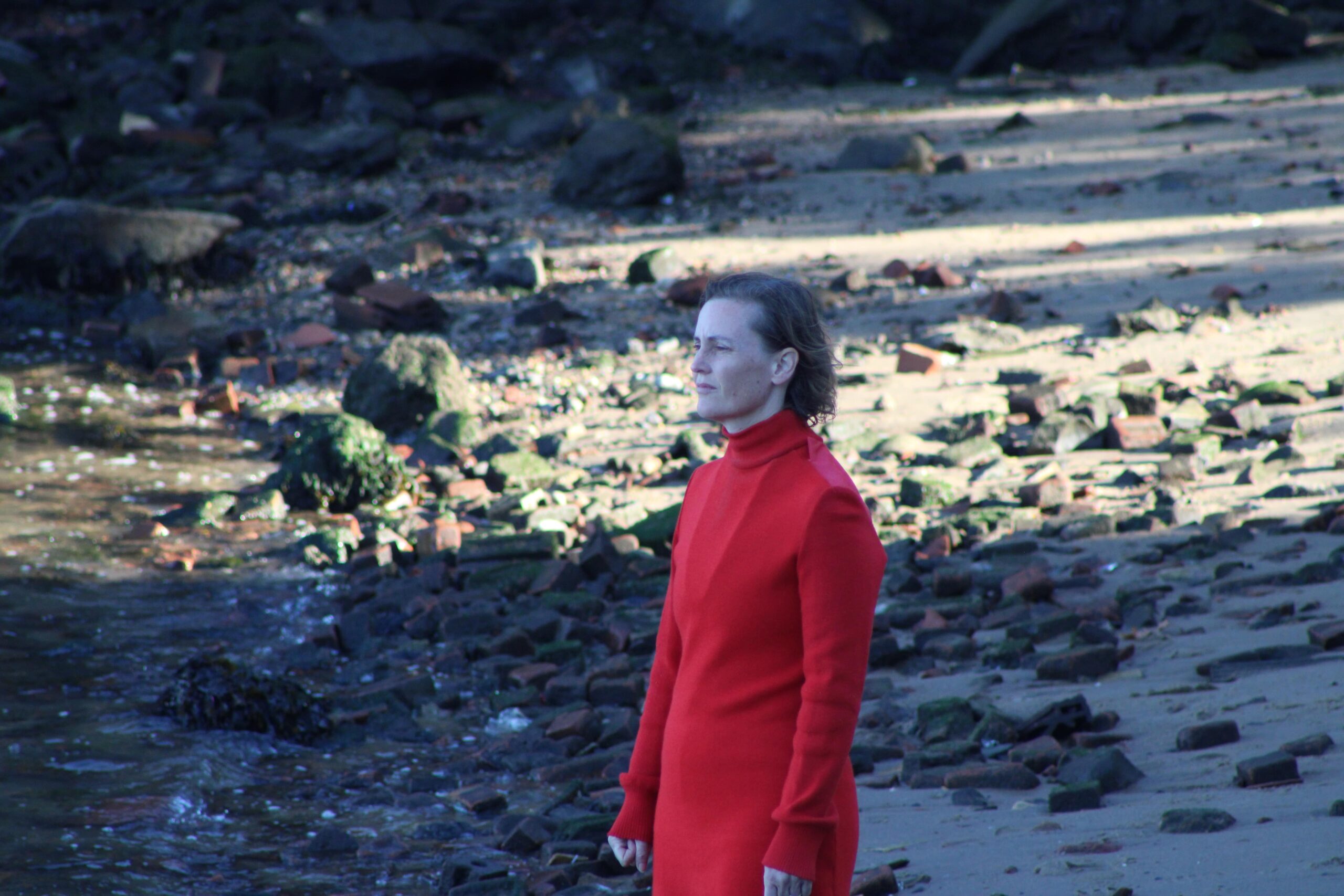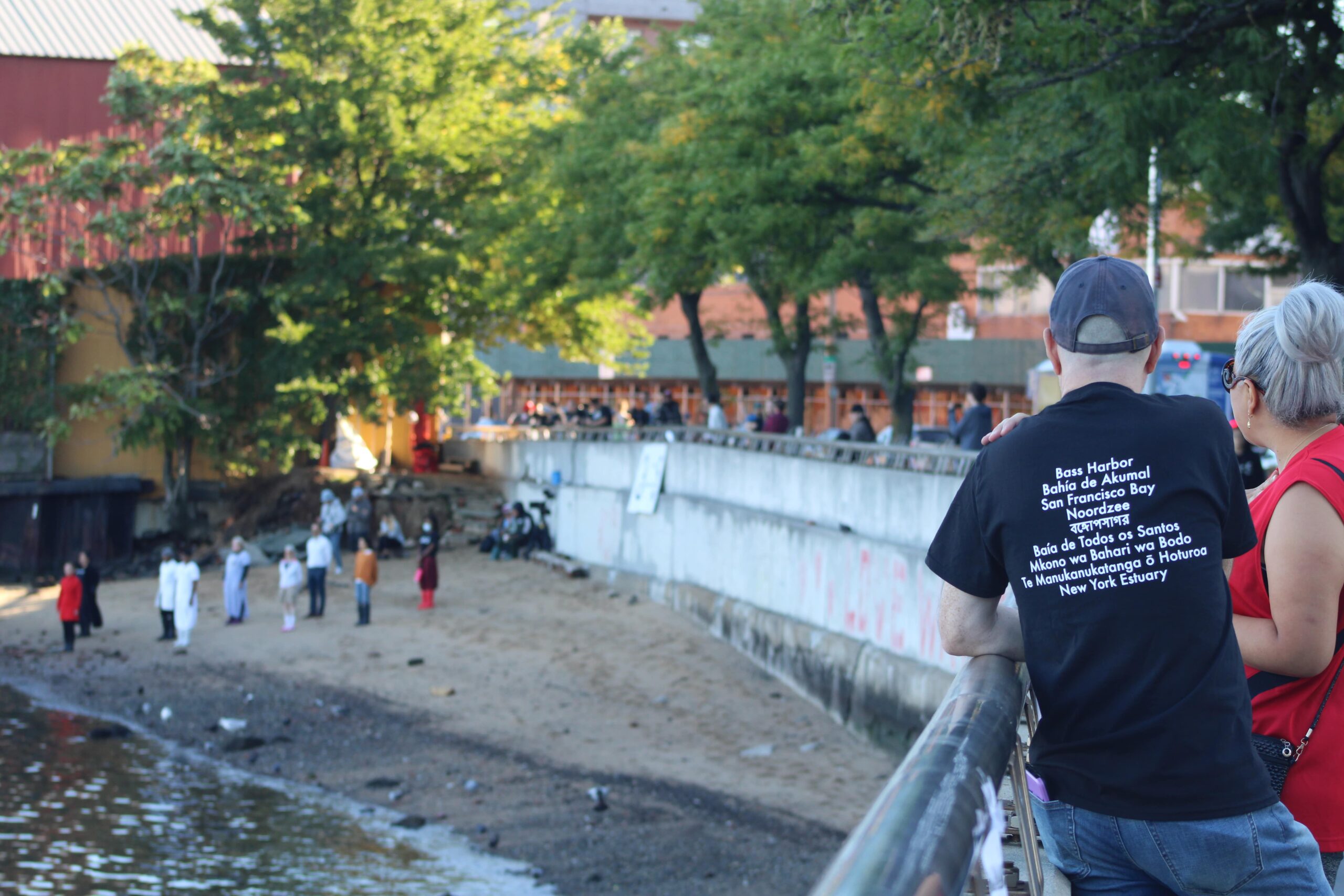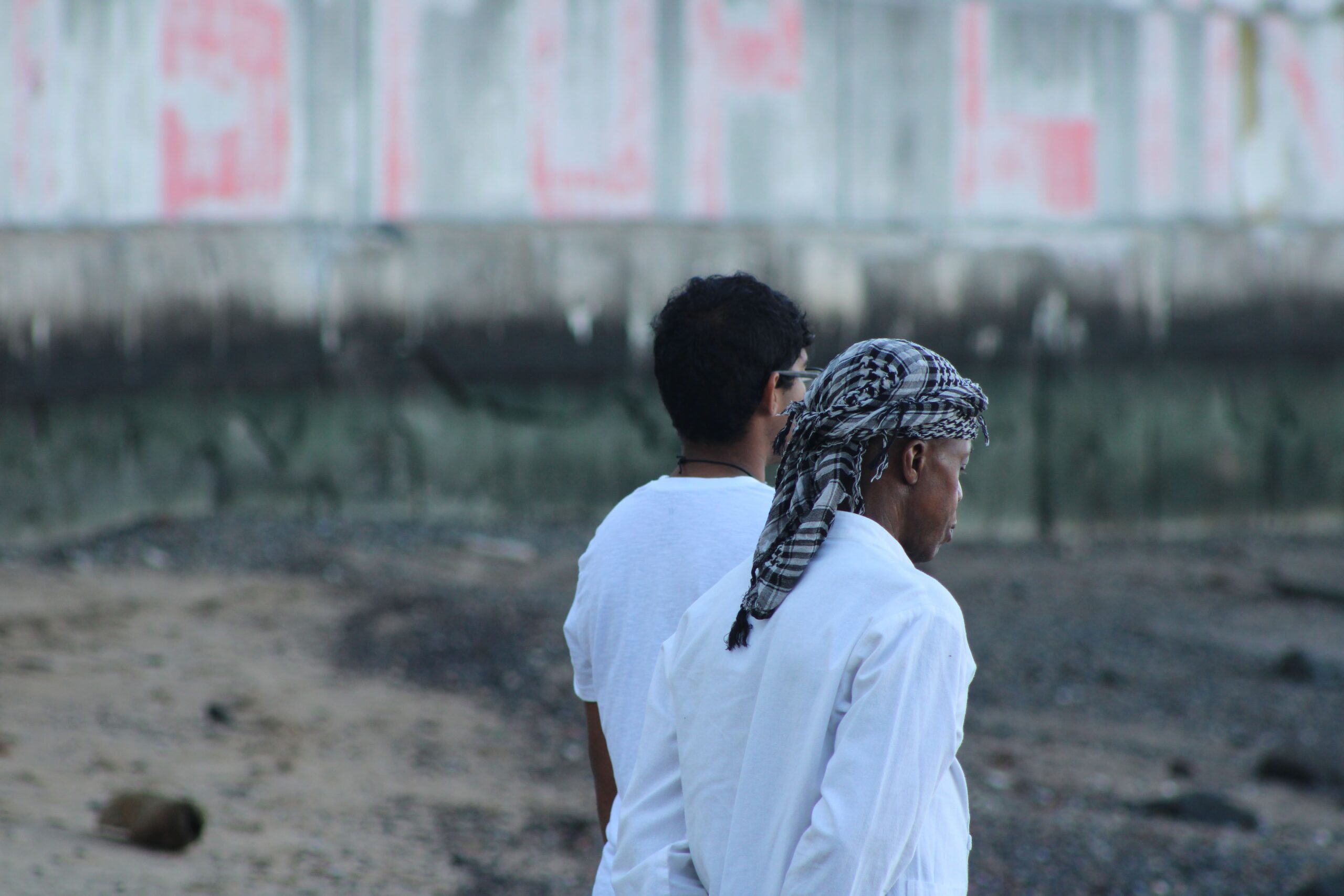The transformative power of environmental art
Sarah Cameron Sunde’s performance art contemplates our interconnection with nature
Meryl Phair • October 14, 2022

Sarah Cameron Sunde settles into the rhythm of Hallett's Cove Beach where she will stand for over twelve hours. Photo by: Meryl Phair.
Sarah Cameron Sunde plants her feet among the rocks of Hallett’s Cove Beach in Astoria, Queens. Her black rain boots settle into the wet sand as she looks out over the gently moving waters of the East River to Manhattan’s golden morning skyline. The wind gently blows her hair back from her face and she breathes with the rhythm of the cove. It’s 7:27 a.m. on September 14, 2022, and Sunde’s feet will stay right where they are for over twelve hours. Until 8:06 p.m., she will experience a full tidal cycle from within the waves.
Hallett’s Cove is the final leg in the New York-based artist’s nine-year performance “36.5 / A Durational Performance with the Sea.” Created in response to Hurricane Sandy, which pummeled New York City in 2012, Sunde stands for 12 to 13 hours in coastal inlets that experience changing water levels due to the ocean’s tides. Throughout the day, the water inches up to her neck and recedes again.
The performance started in Bass Harbor, Maine, in 2013. Sunde has since traveled to multiple locations threatened by climate change to carry out the performance. Her work spans over six continents, including Akumal Bay, Mexico in 2014; the Bay of Bengal, Bangladesh in 2017; and the Te Manukanukatanga ō Hoturoa in Tāmaki Makaurau, Aotearoa-New Zealand in 2022.
“‘36.5 / A Durational Performance with the Sea’ is my attempt to translate the seemingly abstract idea of climate change and sea-level rise into our bodies,” said Sunde in a press release. “The tide tracks time on my body viscerally, which functions as a metaphor for the changing environment.”

The final leg of the nine year art performance takes place in Astoria, Queens. Photo by: Meryl Phair.
As Sunde stands in Hallett’s cove, the sidewalk along the concrete sea wall above her bustles with activity. For each performance, Sunde works with a local cinematographer and film crew to record the performance and live stream it to locations around the world. The camera crew is set up at various angles and photographers move around taking snapshots throughout the day.
The event is participatory and Sunde encourages people to join her for any length of time. A line of rubber boots, along with information about the performance is located at the far end of the cove. As Sunde waits for the rising tide, people walk slowly along the inner sea wall to stand with her. As the hour passes, seven figures assemble and silently face the approaching waters. At each hour, those standing on the sea wall grab pieces of driftwood tied to the wall and beat out a slow clanking drum to signal the passage of time.
The art performance engages time on many different levels, through the durational nature of the work as well as the near decade it has taken to complete. “The water is my collaborator, and the risks are real,” said Sunde. “I stay present in the sensations, attempt to embody the ocean and find a way to endure the struggle while de-centering my human experience and acknowledging potential futures.”

Throughout the day participants join Sunde, standing with the artist as the tide rises and falls. Photo by: Meryl Phair.
While climate art like Sunde’s is effective at developing deeper connections to our natural world, the systemic forces that produce our current ecological nightmare continue to churn regardless. Climate art may not directly produce tangible social and political outcomes, but it forces us to look at ourselves.
The performance draws out themes of hope, courage, resilience, endurance, and survival, alongside those of denial and despair, points out Una Chaudhuri, a trailblazer in “eco-theater” and Dean for the Humanities at New York University. Chaudhuri organized a screening of Sunde’s performance on the outside wall of the campus library on October 6 following a panel discussion about the work between faculty and scholars.
Rather than offering concrete solutions, the performance provides an exploration of the “often-forgotten fact” that we are intricately immersed in earth’s geophysical systems. “Our future depends on understanding and honoring that reality, instead of being at war with it,” said Chaudhuri. “This kind of art helps to slowly move the needle of our ‘climate imagination’ closer to a more respectful and a more realistic stance than the one fostered by the extractive modernity of recent centuries.”
Climate art may not offer a solution against corporate interests, but on an individual level, it can have transformative power. Furthermore, as Chaudhuri said, policies that don’t reflect the ideological shift Sunde’s performance illuminates are ultimately doomed to fail.